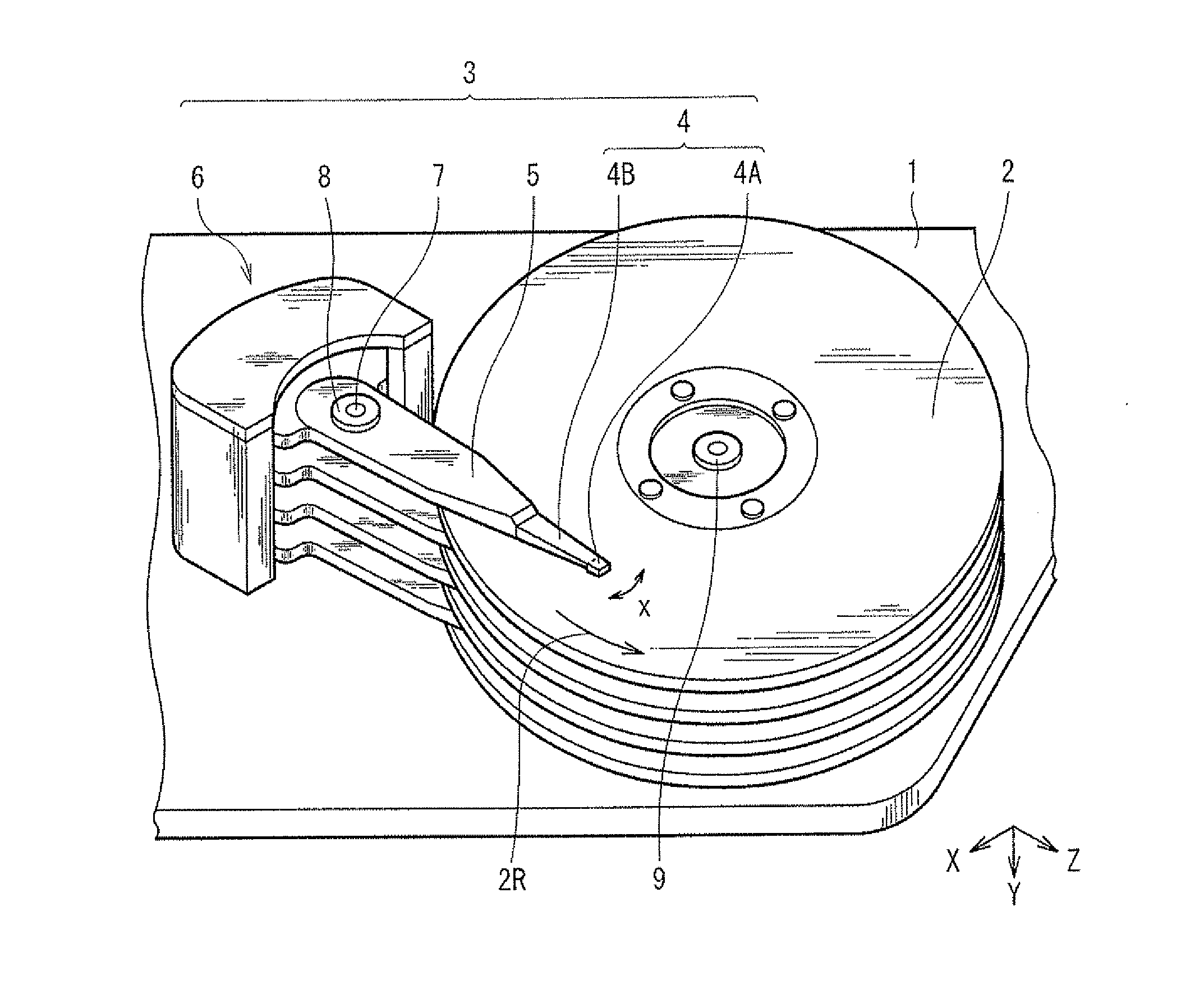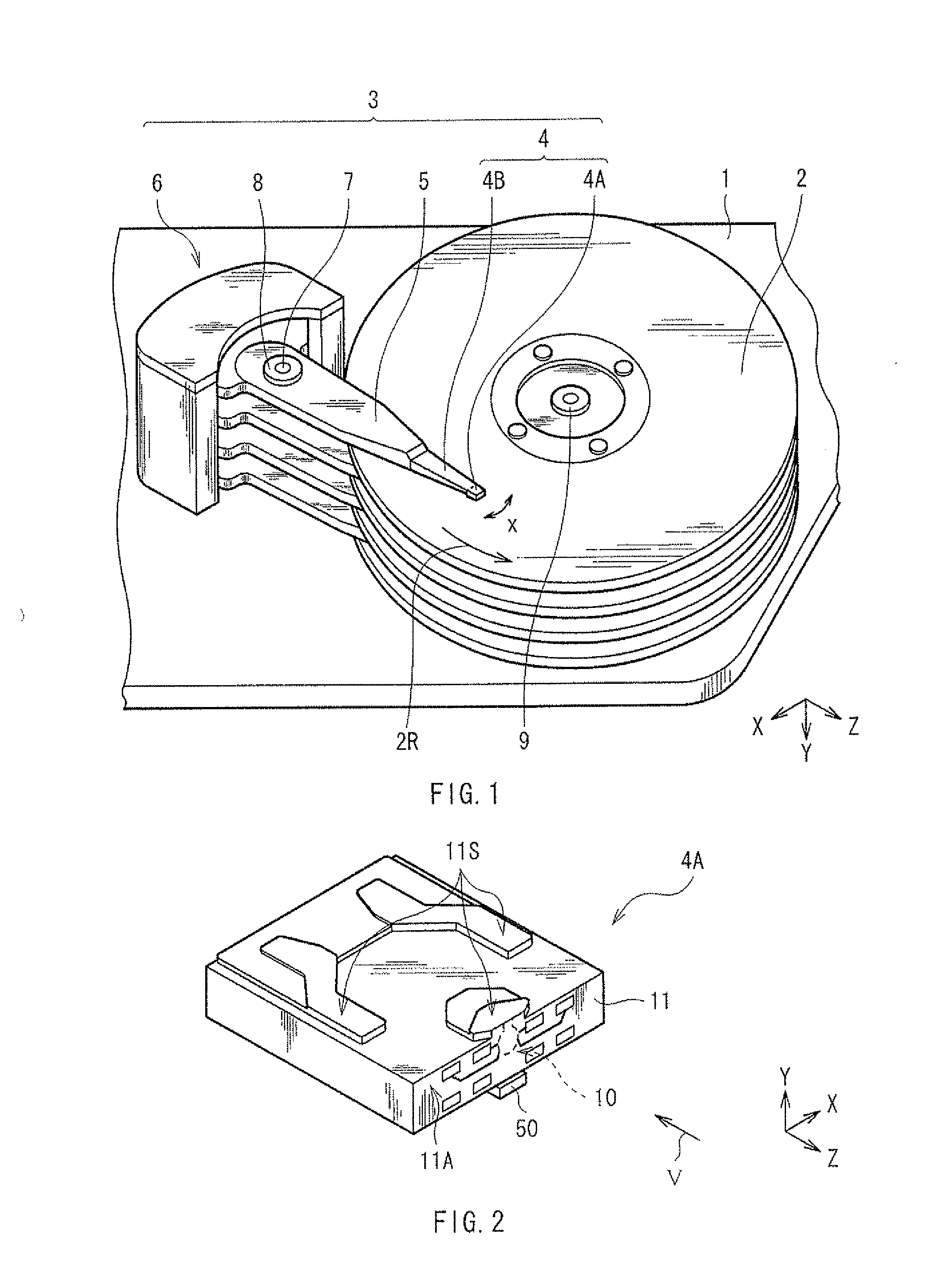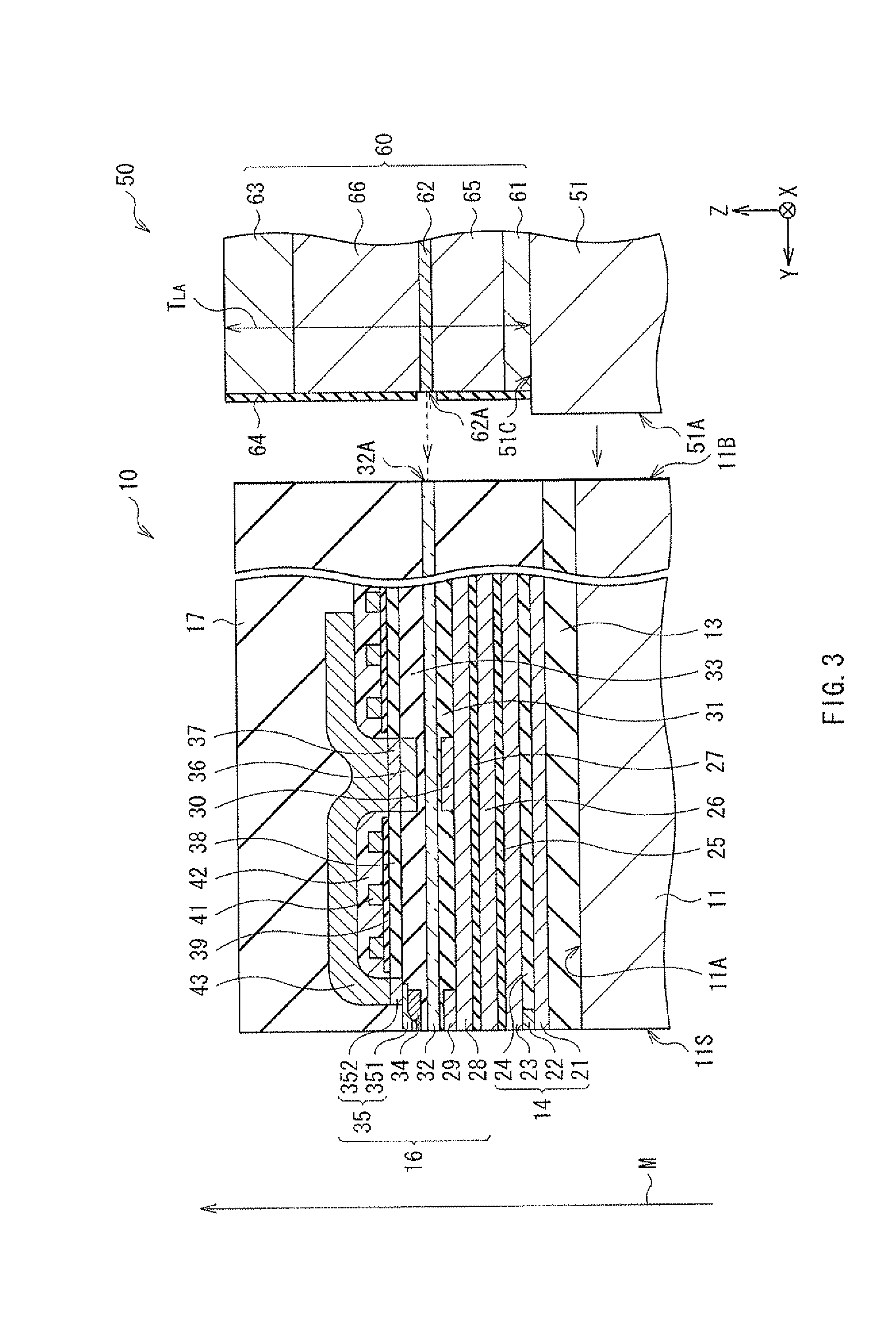Thermally-assisted magnetic recording head and method of manufacturing the same
a technology of magnetic recording head and magnetic recording head, which is applied in the field of thermally assisted magnetic recording head and method of manufacturing the same, can solve the problems of increasing the coercivity of the magnetic disk, reducing the thermal stability of the magnetization of the magnetic microparticle, and affecting the recording of information, so as to prevent the effect of recession and increase the density of the first region
- Summary
- Abstract
- Description
- Claims
- Application Information
AI Technical Summary
Benefits of technology
Problems solved by technology
Method used
Image
Examples
embodiment
[0033]Hereinafter, an embodiment of the invention will be described in detail with reference to the drawings.
[1. Configuration of Magnetic Disk Unit]
[0034]First, referring to FIG. 1 and FIG. 2, a configuration of a magnetic disk unit according to an embodiment of the invention will be described below.
[0035]FIG. 1 is a perspective view illustrating an internal configuration of the magnetic disk unit according to the present embodiment. The magnetic disk unit adopts a load-unload (load / unload) scheme as a driving system, and includes, in a housing 1 for example, a magnetic disk 2 as a magnetic recording medium in which information is to be written, and a head arm assembly (HAA) 3 for writing information in the magnetic disk 2 and reading the information therefrom. The HAA 3 includes a head gimbals assembly (HGA)4, an arm 5 supporting a base of the HGA 4, and a driver 6 as a drive power source for allowing the arm 5 to pivot. The HGA 4 includes a thermally-assisted magnetic head device...
examples
[0095]Examples of the invention will be described in detail.
1. Lifetime Test (1)
experiment 1
Samples 1-1 to 1-6
[0096]A test on lifetime was conducted, at the following conditions, on the magnetic recording reproducing head 10 of the invention, obtained through subjecting the plasmon generator 34 in which the length L1 and the length L4 were both 100 nm to a heat treatment and polishing the same, as illustrated in FIG. 11A. Specifically, heat with power equivalent to 2.5 times as much as that used in an actual write operation was applied to the magnetic recording reproducing head 10, following which writing of information was performed with the power used in the actual write operation, to measure the time taken for a signal-to-noise ratio (SNR) of a read signal to cause a 2 dB decrease for an initial value. Also, the plasmon generator 34 was entirely formed by Au, and a temperature of 220 degrees centigrade was maintained for two hours in the heat treatment.
PUM
| Property | Measurement | Unit |
|---|---|---|
| size | aaaaa | aaaaa |
| temperature | aaaaa | aaaaa |
| size | aaaaa | aaaaa |
Abstract
Description
Claims
Application Information
 Login to View More
Login to View More - R&D
- Intellectual Property
- Life Sciences
- Materials
- Tech Scout
- Unparalleled Data Quality
- Higher Quality Content
- 60% Fewer Hallucinations
Browse by: Latest US Patents, China's latest patents, Technical Efficacy Thesaurus, Application Domain, Technology Topic, Popular Technical Reports.
© 2025 PatSnap. All rights reserved.Legal|Privacy policy|Modern Slavery Act Transparency Statement|Sitemap|About US| Contact US: help@patsnap.com



